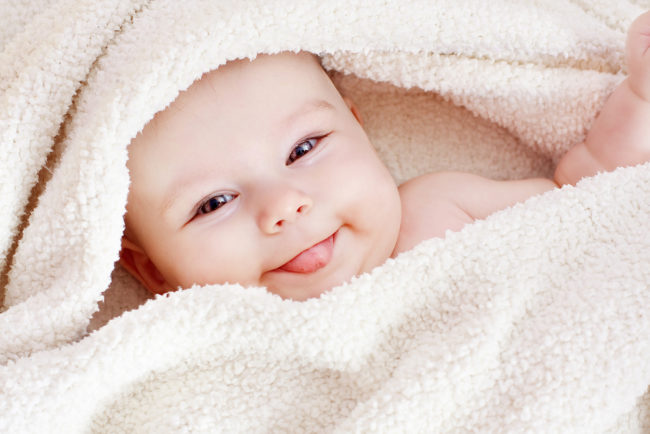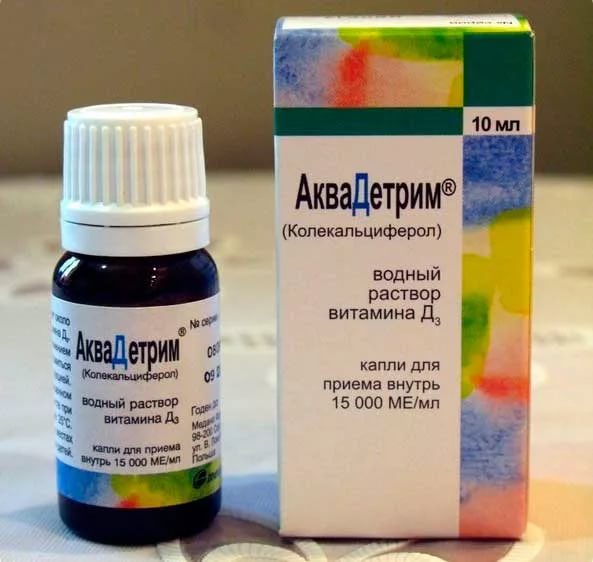Every mother wants her baby to grow normally and develops everything that is possible for this. The problem is that how many mothers, so many opinions, and, wishing their child all the best, many confidently do directly opposite things.
Content
- Vitamin D for infants
- Deficiency of vitamin D in infants
- Overdose of vitamin D in infants: Symptoms
- Vitamin D for infants: which is better
- Vitamin D for infants: Instructions
- Vitamin D for infants: Price
- Vitamin D for infants: Komarovsky
- Vitamin D vitamin allergies
- We will summarize
- Video "Rache and Vitamin D - School of Dr. Komarovsky"
Some mothers tempting their children, letting them run barefoot and releasing on the street without a hat. Others take care of their blood, fearing for their ears, legs and health in general, wrapping them in hats and scarves, when on the street +25. Every mother loves her child and wants him the best, but many mothers, without knowing it, cripple their children, preventing them from developing normally and adapt to life in our difficult world.
Unfortunately, the situation in the country is such that a good doctor, especially a pediatrician, is quite rare, and every responsible parent should know a lot about medicine in order to filter the appointments of yesterday's students or, on the contrary, tempered doctors with experience. You need to understand that you give your child, whether there is a real effect from this and what consequences can be.
Rachite is a diagnosis that is frightened by almost every mother just consisted. Vitamin D is necessary for the prevention of this disease and it is actively used as the main treatment with an already confirmed diagnosis. However, some mothers are still tormented by the question - is vitamin d for the baby? What are the indications for its use and how is the lack of vitamin D of infants dangerous? We will understand together!
Vitamin D for infants
Vitamins are necessary for the full health of an adult, a person formed, and therefore their role in the health and development of newborn crumbs is doubly crucial. Bones, internal organs and systems should grow and actively develop, and supporting in the form of vitamins and minerals is necessary for this. The deficiency of even one vital vitamin can lead to complications and serious diseases. In case of lack of vitamin D, we are talking about rickets.
The fact is that vitamin D is actively involved in all processes associated with the formation of a bone skeleton in the baby. Thanks to him, phosphorus and calcium are better absorbed, it creates optimal conditions for the growth and development of the musculoskeletal system.

Deficiency of vitamin D in infants
So, the lack of vitamin leads to the development of rickets. In this disease, three degrees of severity are distinguished: light, average and severe. Basically, newborn children are inherent in poorly expressed signs of rickets, in which there are no lesions of the skeleton.
The first signs of manifestation of rickets appear at the age of 2-3 months, and if the child was born premature, then even earlier.
Symptoms of the development of rickets in full -term children are as follows:
- The crumbs became increased sweating during feeding or sleeping.
- The baby lags behind in its development. There are certain terms when the baby must be able to hold the head, roll over, crawl, etc. It is clear that all children are different and some deviations are allowed. Therefore, the visits to the clinic to the pediatrician are so frequent in the first year of the baby’s life - the doctor assesses the condition, looks at the level of development of the crumbs, and in which case he will definitely tell parents what measures and how urgently they need to be taken.
- Reducing muscle tone.
- The appearance of a frog pose.
The main thing is to notice these symptoms in time and begin treatment, because further, otherwise the situation will only aggravate, and a number of symptoms will replenish another, extremely serious - deformation of the bone system. And this is already for a lifetime! The pathology of the joints and the spine, problems with childbearing are only some of the consequences of rickets transferred to infancy, so that his parents have a serious responsibility - to protect his baby from such deprivation in the future.

Overdose of vitamin D in infants: Symptoms
Unlike deficiency, an excess of vitamin D of infants is much less common, according to medical statistics. It is possible only if parents seek to eat their child as a large amount of vitamins for noble purposes, without coordinating their actions with a doctor pediatrician. Do not forget that in addition to synthetic vitamin D, the baby can receive it along with the rays of the sun and eaten food. Therefore, the dosage of vitamin depends on the lifestyle of the crumbs, the habitat, the diet of its nutrition, and therefore only a pediatrician can calculate it. An overdose of vitamin D in infants can be expressed by such symptoms:
- Intoxication.
- Convulsions.
- Arrhythmia.
- Dehydration.
- Breathing violation.

Vitamin D for infants: which is better
If the doctor made a diagnosis of a newborn crumbs - rickets, then the mother has a logical question about what vitamin D vitamin D to buy for infants? And here you can distinguish the two most popular drugs - Aquadetrim and Alfa D3. They are good in that the number of their assimilated elements is equal to those that the children's body assimilates naturally in sunlight.
Therefore, you should not invent a bicycle here - the doctor will say everything what droplets are better to buy, how often and in what dosage to give them to a newborn crumb.
In general, the best vitamin D for infants is the one that he receives naturally:
- The most direct, fast and effective way to obtain vitamin D naturally is, of course, walks in the fresh air under the sun of the sun. Obviously, this method depends on the season, but if we are talking about the height of the hot summer, then in no case do not sit at home - walk, walk and walk again! The main thing is to understand that under the straight rays of the scorching sun, the baby cannot be for a long time, his head must be covered with a cap, a panama or a scarf, and the open areas of the body are lubricated with a special protective tool from UV rays in the case of the scorching sun.
- In winter, the sun in the middle lane is extremely small, because pediatricians are usually prescribed to young children to take vitamin D additionally. You can get a special lamp imitating the sun.
- If the baby is on artificial feeding, then, as a rule, it does not need an additional dose of vitamin D - all modern mixtures are enriched with a sufficient degree. When the baby grows up and the amount of the mixture in its diet will decrease, it can be prescribed vitamin in the winter along with the rest of the children.
- On breastfeeding, it is not difficult to replenish the deficiency of vitamin D - the nursing mother needs only to reconsider his daily diet and be enriched as much as possible with rich vitamin products - egg yolk, low -fat beef, fish oil and fish itself.

Vitamin D for infants: Instructions
So, a diagnosis is made - rickets, or a predisposition to it is revealed, in addition to the street not a season, the sun does not please the eye, and now the pediatrician prescribes to drink vitamin D until the first warm sunlight. And then several questions arise at once.
How much to give vitamin d infants? The daily need of a child of the first year of life in vitamin D is 500 IU, this corresponds to one drop of synthesized vitamin. They usually give it during periods when solar activity is minimal, and if we talk about the middle lane, then from about October to May.
How to take vitamin d infants? One drop of the drug can be dissolved in a spoonful of an adapted mixture, breast milk or ordinary water and give it a baby once a day.

Vitamin D for infants: Price
The price of drugs varies between 200-500 rubles, depending on the brand, manufacturer, sales, and specific pharmacy network. It is enough for a long time, because the dosage is usually 1 drop per day. The shelf life can reach three years, so at a low price you can take it for a very, very long time.

Vitamin D for infants: Komarovsky
Komarovsky Evgeny Olegovich is a pediatrician, a doctor of the highest category and at the same time a TV presenter known throughout Russia. He knows how to explain complex things in a simple language, urging all parents to be able to think and include common sense. He boldly debunk a bunch of medical myths that have developed for centuries, and for this they either revere him or hate him, but he leaves no one indifferent. The first camp includes, as a rule, young progressive mothers who can make the filter of information that is pouring on them correctly on them, for the second - the older generation, which has its own unshakable opinion.
Thanks to Komarovsky, millions of newly -made mothers throughout Russia understand that to give birth and grow a healthy baby is not difficult and not scary, it is worth reading his books, visiting the site or watching programs about interests of interest - he provides all information with excess! Evgeny Olegovich urges each parent not to be lazy, read and study, because under today's conditions for the development of medicine, even drugs prescribed by a local pediatrician may be useless, and sometimes completely dangerous. Therefore, it is important to understand the nature of the disease, the method of infection and treatment methods! In any medical issue, it is good to know the point of view of a respected pediatrician, and here is what he says regarding vitamin D3 for infants.
To begin with, it is necessary to understand the mechanism of bone formation in the child. In order for his bones to grow, the exchange of phosphorus and calcium occurs. Vitamin D regulates this exchange, and with its deficiency, rickets occur. It turns out that this disease is very rare, although it is often remembered in clinics.
A distinctive feature of vitamin D is that it can fall into the body in two ways - with the absorbed food and through the skin by exposure to UV rays. Vitamin's deficiency is dangerous in the first year of the baby’s life, it is during this period of life that there is a risk of rickets.
The ability of the skin under the influence of sunlight to produce vitamin D is largely determined by the concentration of melanin, which, in turn, is responsible for the color of the skin. The more melanin, the darker the skin and the more time it should be spent in the sun to develop the required amount of vitamin D.
Komarovsky claims that without an x \u200b\u200b-ray of the knee joint and taken blood test to determine the content of vitamin D, phosphorus and calcium, it is impossible to make the diagnosis of rickets. If the doctor did this like this, by eye, you need to run away from him and look for a qualified specialist.
There are no clear signs of rickets, but they are possible, for example, later teething of poor quality teeth, softening and thinning of the bones of the skull, slowing down the baby’s growth, frequent fractures, etc.
But contrary to many sources, the symptoms of rickets are not:
- wiped nape;
- sweaty pens;
- anxiety;
- constant whims;
- "Curved" legs;
- hypertonus.
Also, in some sources, you can find information that children with artificial feeding have great chances to get rickets. This could be true in those days when there was no high -quality adapted milk mixture on the market, and babies were fed with cow's milk. For children of the first year of life, it is extremely harmful, and indeed, its consumption as a constant food provoked rickets in infants. But today, all mixtures contain vitamin D, and thanks to this, the diagnosis of rickets has practically sunk into oblivion.
So, Evgeny Olegovich claims that if the child is fed with his chest or high -quality milk mixture, he walks every day, does not live around the polar circle, he has a light color of the skin, then such a baby cannot have rickets.
As for the synthesized vitamin D, prescribed by pediatricians as a prevention and treatment of rickets, Komarovsky indicates a necessary daily dose of 500 IU or one drop of the drug. For the prevention of rickets, it does not matter which solution to take - oil vitamin D for infants or water. For treatment, it is more effective to use aqueous solution - it accumulates in a smaller amount in the body and the risk of an overdose, respectively, is also less. In treatment, in principle, there is a risk of overdose, because Doses are used in larger quantities than 500 IU per day.

Vitamin D vitamin allergies
An allergic reaction may not be given vitamin D, but an overdose or additional components that make up the drops. It can be expressed in the form of a rash, itching or inflammation of individual areas of the skin, cough, asthma attacks, etc.

We will summarize
Now you know how to give vitamin d for the baby, for which it is needed, what processes affects, and what happens to a tiny organism with its deficiency or overdose. Walk more, eat correctly and feed your baby, and rickets do not threaten you!









Comments
a couple of years ago, there was no side of metrogils from the same problem, there were no side effects ...
I’m not a fan of peeling at all, it saves from acne of metrogil, it also smoothes it ...
Great article! ...
I take the second course of the Capsules Climafite 911. The tides went very quickly. It became calmer, irritability went away and I sleep well ...
i also noticed - it is worth nervous, everything immediately affects the face. Therefore, I try to avoid conflicts and unpleasant people. Of the creams, I like Miaflow from wrinkles - smoothes not only small wrinkles ...